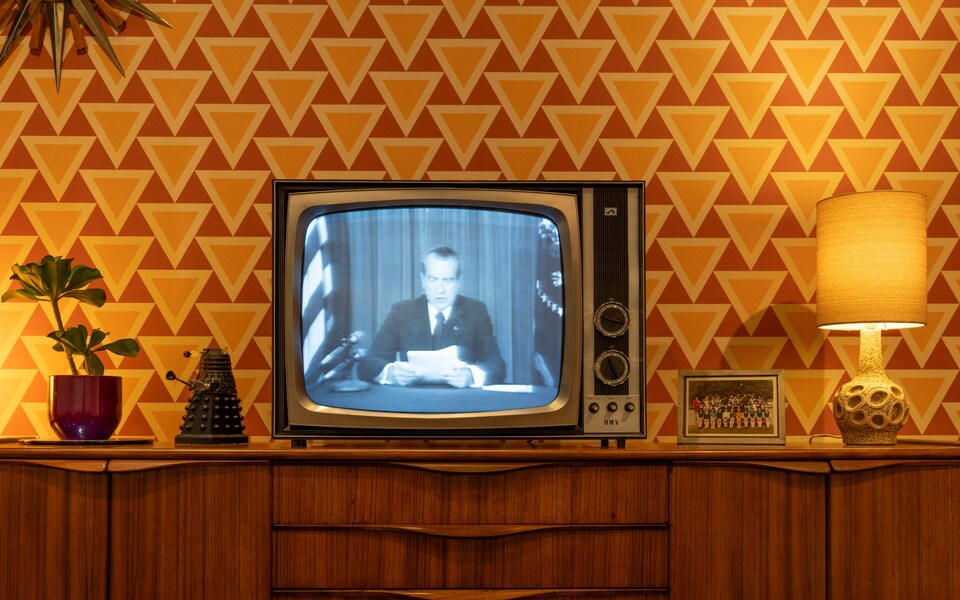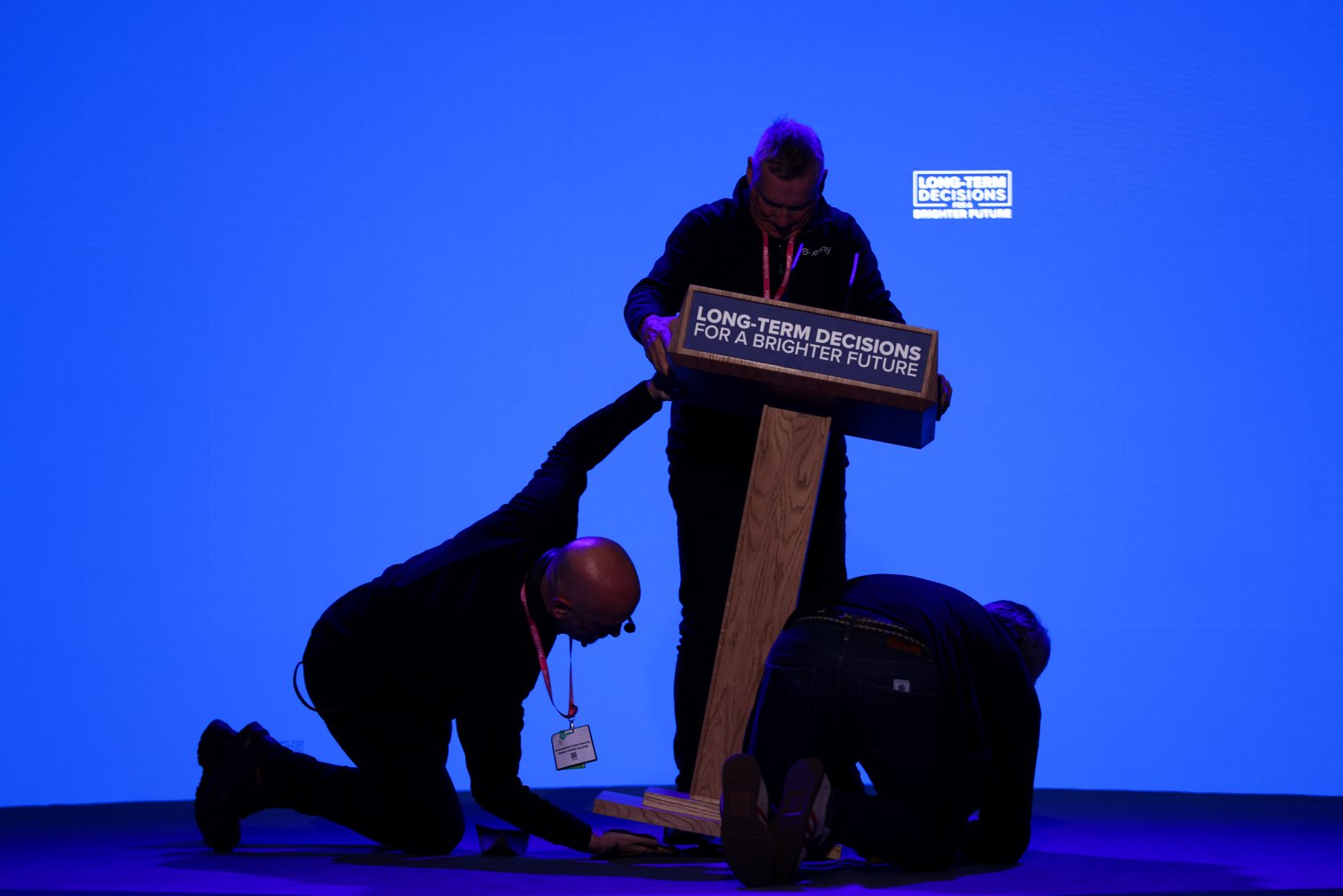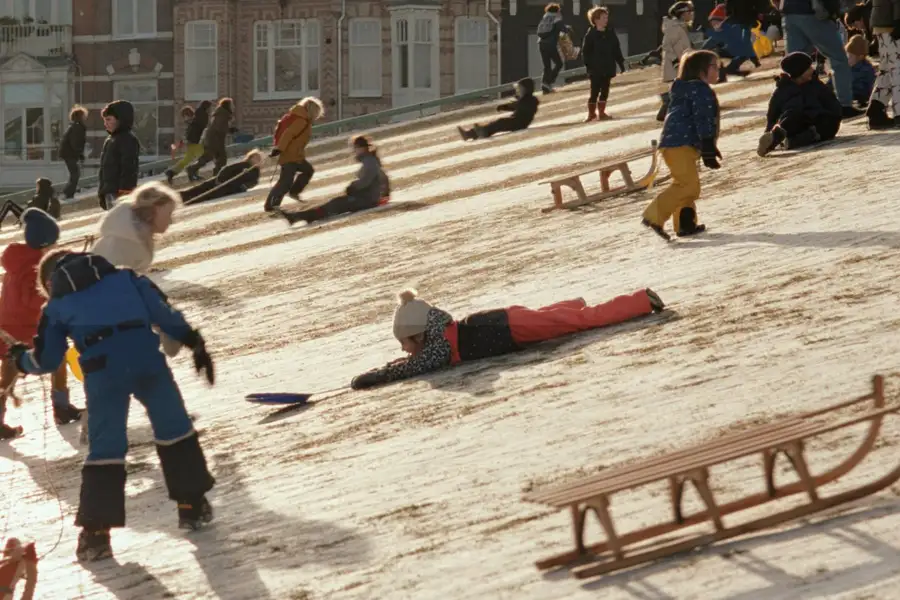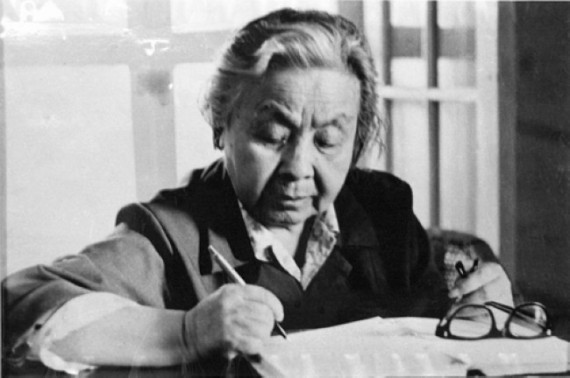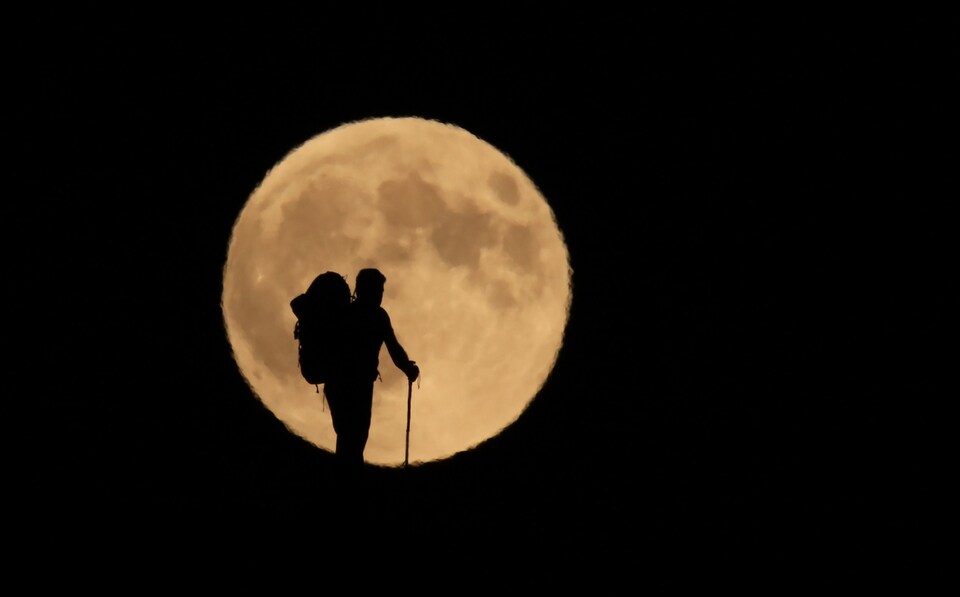20:05 GMT on 20 July 1969: astronauts Neil Armstrong and Buzz Aldrin are aboard Apollo l1’s Lunar Command Module, dropping steadily towards the lunar surface in humankind’s first attempt to visit another world.
“Drifting to the right a little,” Buzz remarks — and then an alarm goes off, and then another, and another, until at last the transmission breaks down.
The next thing we see is a desk set in front of a blue curtain, and flanked by flags: the Stars and Stripes, and the Presidential seal. Richard Nixon, the US President, takes his seat and catches the eye of figures hovering off-screen: is everything ready?
And so he begins; it’s a speech no one can or will forget. It was written by his speechwriter, William Safire, as a contingency in the event that Buzz and Neil land on the Moon in a way that leaves them alive but doomed, stranded without hope of rescue in the Sea of Tranquility.
“These brave men… know that there is no hope for their recovery.” Nixon swallows hard. “But they also know that there is hope for Mankind in their sacrifice.”
From 17 February, Richard Nixon’s speech will play to visitors to the Sainsbury Centre in Norwich. They will watch it from the comfort of a 1960s-era sofa, in a living room decked out in such a way as to transport them back to that day, in June 1969, when two heroes found themselves doomed and alone and sure to die on the Moon.
Confronted with Nixon struggling to control his emotions on a period TV, they may well ask themselves if what they are seeing is real. The props are real, and so is the speech, marking and mourning the death of two American heroes. Richard Nixon is real, or as real as anyone can be on TV. His voice and gestures are his own (albeit — and we’ll come to this in a moment — strung together by generative computer algorithms).
Will anyone be fooled?
Not me. I can remember Apollo 11’s successful landing, and the crew’s triumphant return to Earth less than a week later, on 24 July. But, hang on — what, exactly, do I remember? I was two. If my parents had told me, over and over, that they had sat me down in front of TV coverage of the Kennedy assassination, I would probably have come to believe that, too. Memory is unreliable, and people are suggestible.
Jago Cooper includes the installation In Event of Moon Disaster in the Sainsbury Centre’s exhibition “What Is Truth”. Cooper, who directs the centre, wasn’t even born when Apollo 11 rose from the launchpad. Neither were the two filmmakers, Halsey Burgund and Francesca Panetta, who won a 2021 Emmy for In Event Of Moon Disaster in the category of Interactive Media Documentary. The bottom line here seems to be: the past exists only because we trust what others say about it.
Other exhibits in the “What is Truth?” season will come at the same territory from different angles. There are artworks about time and artworks about identity. In May, an exhibition entitled The Camera Never Lies uses war photography from a private collection, The Incite Project, to reveal how a few handfuls of images have shaped our narratives of conflict. This is the other thing to remember, as we contemplate a world awash with deepfakes and avatars: the truth has always been up for grabs.
Sound artist Halsey Burgund and artist-technologist Francesca Panetta recruited experts in Israel and Ukraine to help realise In Event Of Moon Disaster. Actor Louis Wheeler spent days in a studio, enacting Nixon’s speech; the President’s face, posture and mannerisms were assembled from archive footage of a speech about Vietnam.
President Nixon’s counterfactual TV eulogy was produced by the MIT Center for Advanced Virtuality to highlight the malleability of digital images. It’s been doing the rounds of art galleries and tech websites since 2019, and times have moved on to some degree. Utter the word “deepfake” today and you’re less likely to conjure up images of a devastated Richard Nixon as gossip about those pornographic deepfake images of Taylor Swift, viewed 27 million times in 19 hours when they were circulated this January on Twitter.
No-one imagines for second that Swift had anything to do with them, of course, so let’s be positive here: MIT’s message about not believing everything you see is getting through.
As a film about deepfakes, In Event of Moon Disaster is strangely reassuring. It’s a work of genuine creative brilliance. It’s playful: we feel warmer towards Richard Nixon in this difficult fictional moment than we probably ever felt about him in life. It’s educational: the speech, though it never had to be delivered (thank God), is real enough, an historical document that reveals how much was at stake on that day. And in a twisted way, the film is immensely respectful, singing the praises of extraordinary men in terms only tragedy can adequately articulate.
As a film about the Moon, though, In Event of Moon Disaster is a very different kettle of fish and frankly disturbing. You can’t help but feel, having watched it, that Burgund and Panetta’s synthetic moon disaster is more believable than Apollo’s actual, historical triumph.
The novelist Norman Mailer observed early on that “in another couple of years there will be people arguing in bars about whether anyone even went to the Moon.” And so it came to pass: claims that the moon landings were fake began the moment the Apollo missions ended in 1972.
The show’s curator Jago Cooper has a theory about this: “The Moon is such a weird bloody thing,” he says. “The idea that we merely pretended to walk about there is more believable than what actually happened. That’s the thing about our relationship with what we’re told: it has to be believable within our lived experience, or we start driving wedges into it that undermine its credibility.”
This raises a nasty possibility: that the more enormous our adventures, the less likely we are to believe them; and the crazier our world, the less attention we’ll pay to it. “Humankind cannot bear very much reality” said TS Eliot, and maybe we’re beginning to understand why.
For a start, we cannot bear too much information. The more we’re told about the world, the more we search for things that are familiar. In an essay accompanying the exhibition, curator Paul Luckraft finds us in thrall to confirmation bias “because we can’t see what’s new in the dizzying amount of text, image, video and audio fragments available to us.”
The deluge of information brought about by digital culture is already being weaponised — witness Trump’s former chief strategist Steve Bannon, who observed in 2018, ‘The real opposition is the media. And the way to deal with them is to flood the zone with shit.”
Even more disturbing: the world of shifting appearances ushered in by Bannon, Trump, Putin et al. might be the saving of us. In a recent book about the future of nuclear warfare, Deterrence under Uncertainty, RAND policy researcher Edward Geist conjures up a likely media-saturated future in which we all know full well that appearances are deceptive, but no-one has the faintest idea what is actually going on. Belligerents in such a world would never have to fire a shot in anger, says Geist, merely persuade the enemy that their adversary’s values are better than their own.
“Tricky Dick” Nixon would flourish in such a hyper-paranoid world, but then, so might we all. Imagine that perpetual peace is ours for the taking — so long as we abandon the faith in facts that put men on the Moon!
Fifty years ago you’d have struggled to find a anyone casting doubt on NASA’s achievement, that day in July 1969. Fifty years later, a YouGov poll found sixteen per cent of the British public believed the moon landing most likely never happened.
Deepfakes themselves aren’t the cause of such incredulity, but they have the potential to exacerbate it immeasurably — and this, says Halsey Burgund, is why he and Francesca Panetta were inspired to make In Event of Moon Disaster. “The hope of the project is to provide some simple awareness of this kind of technology, its ubiquity and out-there-ness,” he explains. “If we’ve made an aesthetically satisfying and emotional piece, so much the better — it’ll help people internalise the challenges facing us right now.” Though bullish in defence of the technology’s artistic possibilities, Burgund concedes that the harms it can wreak are real, and can be distributed at scale. (Ask Taylor Swift.) “It’s not as though intelligent people aren’t addressing these problems,” Burgund says. “But it takes a lot of time — and society can’t change that quickly.”

